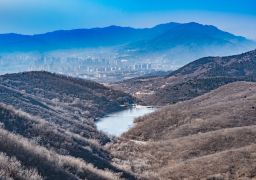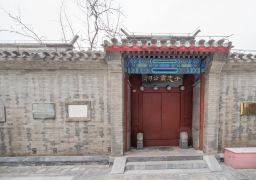Yang Mengying, styled Wenfu, was a native of Fengdu in Sichuan. He obtained the prestigious Jinshi degree in the 23rd year of the Chenghua era (1487) of the Ming Dynasty. Later, in the 16th year of the Hongzhi era (1503), he was appointed as the prefect of Hangzhou. During his tenure, he faced the issue of the West Lake, which had been silted up for a long time, with the area west of the lake almost turning into flat land.

Yang Mengying was a staunch advocate for dredging to restore the lake’s surface. Despite encountering resistance from vested interest holders, he petitioned for permission to carry out the necessary work. This led to a prolonged, five-year controversy before the dredging and lake restoration could finally proceed.
From March to September of the 3rd year of the Zhengde era (1508), the Hangzhou Prefecture mobilized 8000 laborers for the task. They reclaimed nearly 3500 acres of land that had been encroached upon by the West Lake’s surface. The silt and aquatic plants removed during the dredging were used to raise the Su Causeway and construct a long causeway on Xili Lake. This new causeway ran north-south, starting from the foot of Renshou Mountain and Malingshan in the north, extending to Chishanbu and the eastern foothills of Qianliangsi Ridge in the south, connecting Dingjia Mountain and Miaoniu Mountain.
The causeway featured three bridges from the Song Dynasty on its northern section and three new bridges on its southern section. Subsequent generations named this long causeway after the Su Causeway, calling it Yang Gongdi, and the six bridges on it were known as Li Liuqiao. The Yang Gongdi Memorial Pavilion stands beside the Jingxing Bridge as a testament to Yang Mengying’s efforts in restoring the West Lake’s beauty and functionality.Yang Mengying, as the prefect of Hangzhou, dredged the lake and built the causeway, drawing on and inheriting the fine tradition of Hangzhou local officials since the Tang Dynasty’s Li Bi and Bai Juyi, who emphasized the protection of the West Lake. After deliberation by the Ming Dynasty’s Ministry of Personnel, it was decided to demote Yang Mengying, but also ordered him to use civilian labor to complete the project. However, he was ultimately targeted for his determined efforts to restore the surface of the West Lake, was demoted to the position of Deputy Prefect of Shuntian Prefecture, and left Hangzhou. Yang Mengying’s efforts in dredging the lake and building the causeway have received due recognition in history. Tian Rucheng, in his ‘West Lake Travel Notes’, stated that after the lake was dredged, the West Lake returned to its former state of the Tang and Song Dynasties. He also said: After Le Tian (Bai Juyi), it took two hundred years to have Zizhan (Su Shi). After Zizhan, it took four hundred years to have Wenfu. The people of Hangzhou later placed his statue in the Si Xian Ci (Four Sages Temple) on Gushan, which was built by Yang Mengying himself to worship Li Bi, Bai Juyi, Lin Bu, and Su Shi, for future generations to offer sacrifices and mourn. The Four Sages Temple was then renamed the Wu Xian Ci. Now, a memorial pavilion and a sculpture of Yang Mengying have been built on Yang Gongdi to commemorate him. The entire text is open all year round and is open all day long.
—
The mandatory constraints are as follows:
1. No translation is required; keep the text in English.
3. The response must not begin or end with phrases such as “According to your request”, “I have”, “Please note”, or any Chinese expressions.
—









